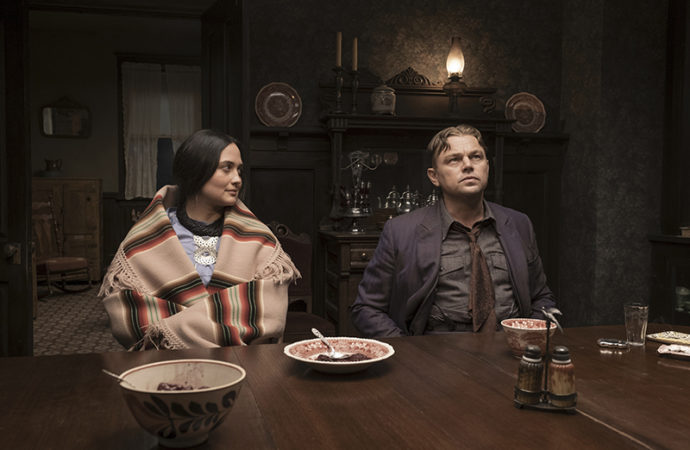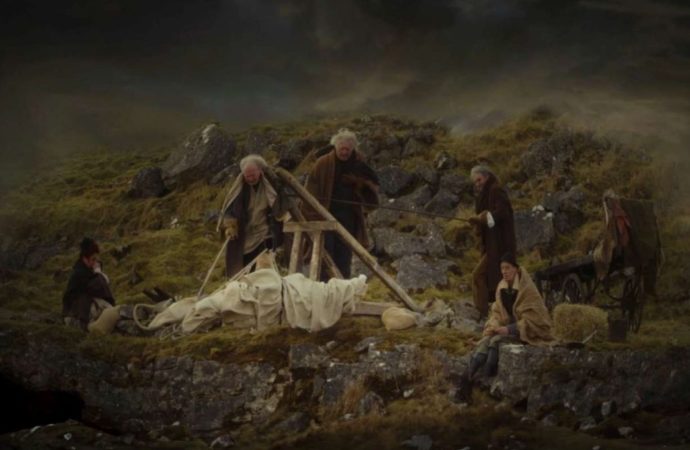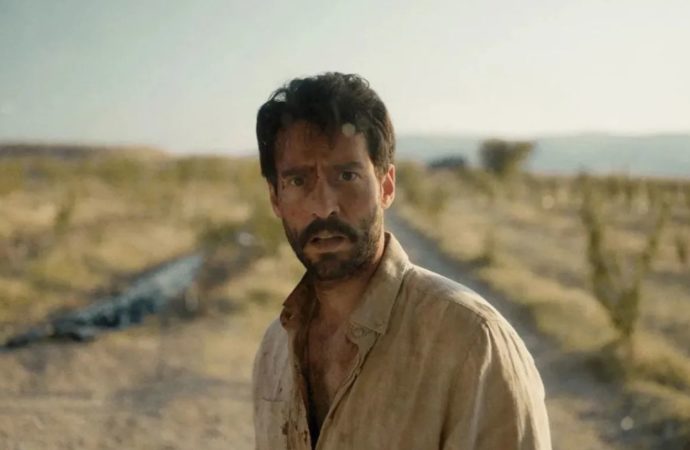Violence has been one of the common threads running through Martin Scorsese‘s vast and prodigious filmography. From his incursions into the mean streets of New York as the standard-bearer of the renewed gangster cinema, to his latest addition to a locker that preserves the last aromas of that auteur Hollywood that he and other generation mates cemented, the red fluid has accompanied most of his cinematic creations. The director of Raging Bull prevails almost single-handedly as the last active wolf of that pack that shook the system. An animal fully connected with his time and resilient to the conception of cinema as an event to be enjoyed in the theater; indifferent to metrics, impositions or dominant tastes. He proves it once again with his latest work and the length of this one, now interested in the foundational myths of a country of shadows everywhere.
Killers of the Flower Moon, a project long yearned for by the director of Taxi Driver, adapts the novel by David Grann, published in 2017, about the true story of the serial murders to the Osage Indian tribe during the 1920s. A trail of blood that in turn was investigated by a newly hatched FBI. That material serves Scorsese to settle accounts with the dishonorable forging of his nation, and pay, at the same time, a well-deserved tribute to its first inhabitants. If in The Wolf of Wall Street he plunged into the greedy atrocities of a capitalist system unleashed after the neoliberal impulse, in Gangs of New York he recreated himself in the violent outburst of the original “bad streets” of New York, and in The Irishman he traced the sign of violence and the turbulent currents that marked the great milestones of the last century in its demarcation of origin, in his latest proposal he continues to delve into those (traumatic) foundational marks, gutting that shameful genome that turned the United States into the world’s leading power.

And what better access than a genre eminently from those parts and that had been omitted in his extensive and tireless filmography? The twilight western borders in Killers of the Flower Moon with crime films and a romantic melodrama articulated through the relationship between Ernest (Leonardo DiCaprio), a young cook returned from World War I who bows to the destiny that Hale, a fearsome local chieftain (Robert De Niro) has prepared for him, and whose first phase of his Machiavellian plan involves marrying a rich Indian heiress (Lily Gladstone). This link, which causes opposing turbulences in the two involved, will mark the main internal conflict of the plot. Scorsese gives space to this conflict, within the ambitious structure of characters, plots and criminal subplots, through dialogues and silences that express the inner torments of characters who navigate, with contrasting attitudes and differentiated sorrows, through this climate of pettiness and atrocious savagery.

Throughout three and a half hours of a non-fatiguing character, with an admirable narrative flow, the director from Queens circulates through the swampy terrain that cemented the country of the stars and stripes. An exploration of greed, racism, racial extermination, corruption and that violence that roams unpunished in the spaces that persist, and take advantage of non-civilization. In fact, it explores the rotten roots of this North American entity defined by an endemic violence that seems to be validated in that unbridled eagerness to embrace the dollar as a currency for everything. In this correlation of forces on either side of morality and the law, Scorsese places his empathetic reserves in the Osage and in this new-fangled police tribe that bursts in at the last stretch to leave traces of civilization.
Although the veteran filmmaker continues to be fascinated by the characters who walk the rope that supports the devil. Both William Hale and his nephew Ernest represent the anti-hero that has taken up a good part of the Italian-American director’s footage. And he does it with a restrained style, aware of remaining the last standard bearer of classic cinema, that which preserves the fragrances of the extinct Hollywood, without losing flashes of that nervous and groundbreaking calligraphy that raised him among the most prominent of his generation. Though here he decides to reduce the impact of his stamp, he prefers not to flaunt his recognizable style, letting the gestures, silences and excessive verbalizations of the characters compromise their emotions and destinies.
The only flaws can be found in a certain repetition between image and dialogue; sequences narrated by dialogue that are then presented on screen, and a somewhat predictable script, in which the perverse intentions hidden by the chieftain Hale are easily anticipated. Some will also find some objection in the performance of a DiCaprio who borders on parody under that permanent frown and those drooping lower lips that seem inherited from the last acting stage of a revived De Niro, who next to Martin Scorsese recovers his glorious acting sparkle of yesteryear. The veteran actor thus distances himself as the highlight of the cast alongside the controlled, and sparing of words, Lily Gladstone.
Killers of the Flower Moon is not the New York director’s best work, nor even the best of his last period, but it is another ambitious and memorable example of a director who still conceives cinema as a show that does not conflict with authorship. A one-of-a-kind author who will be sorely missed the day he stops putting his works on the planet’s billboards.









No one has posted any comments yet. Be the first person!